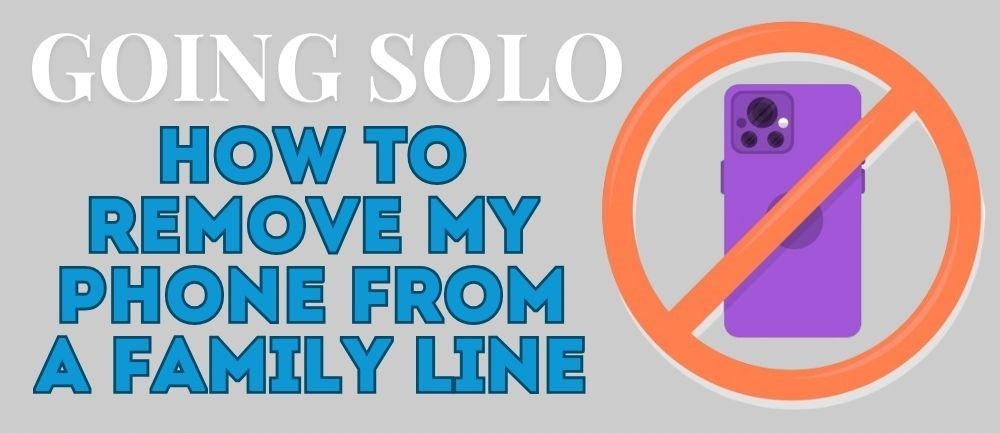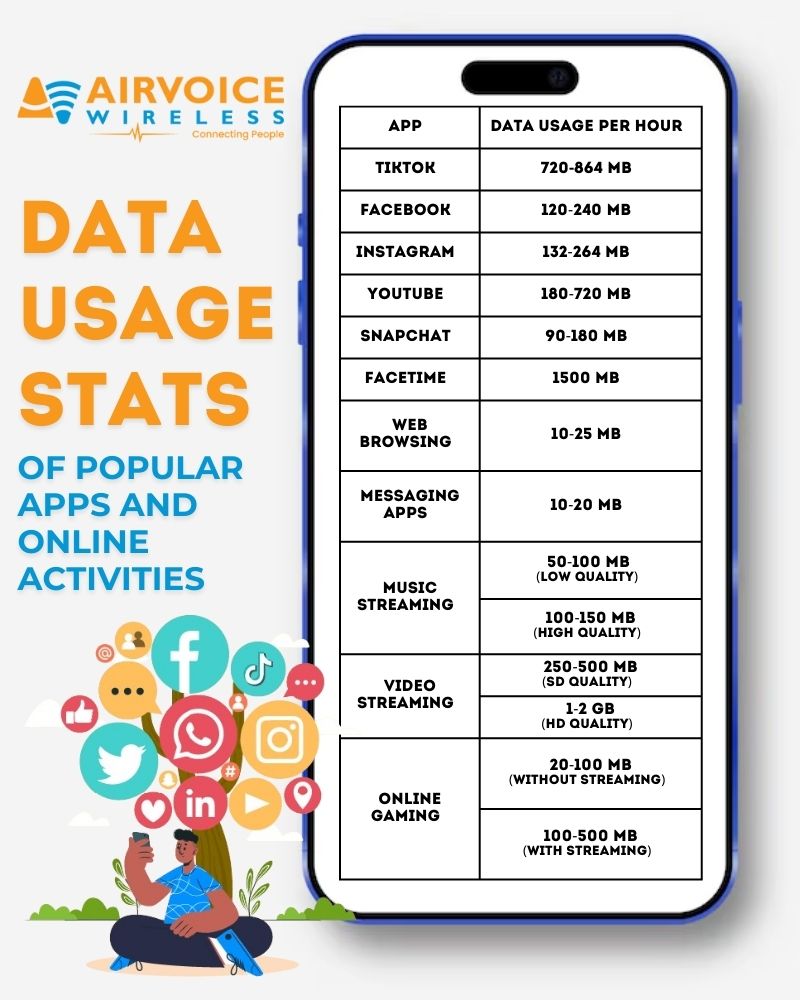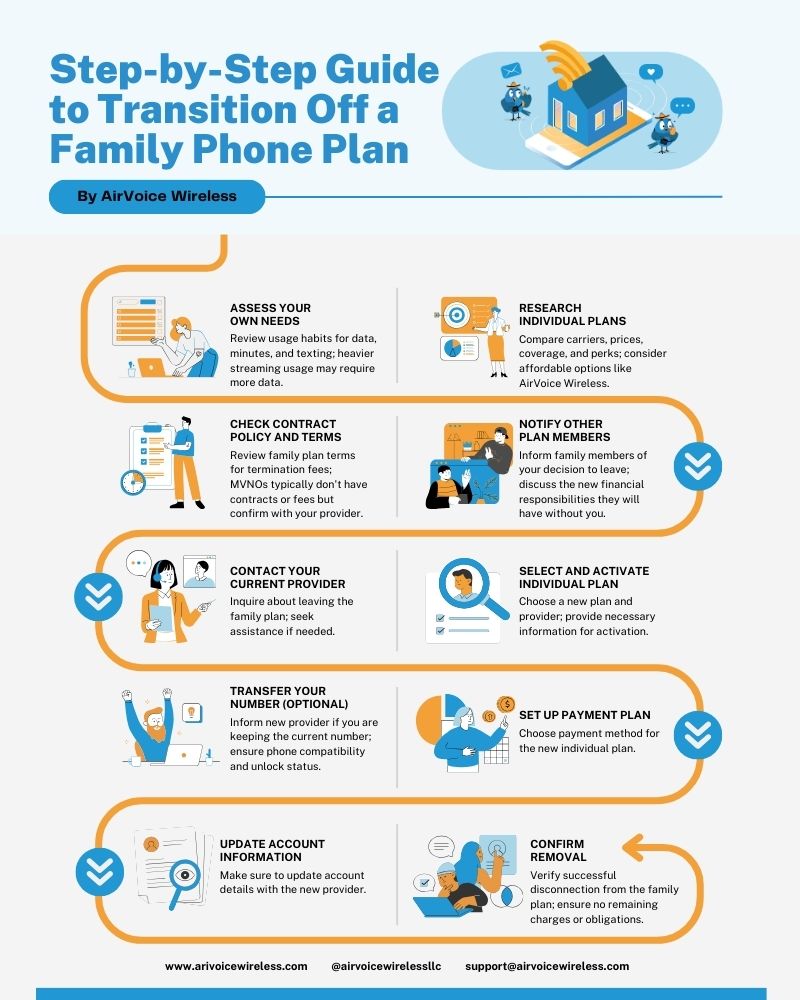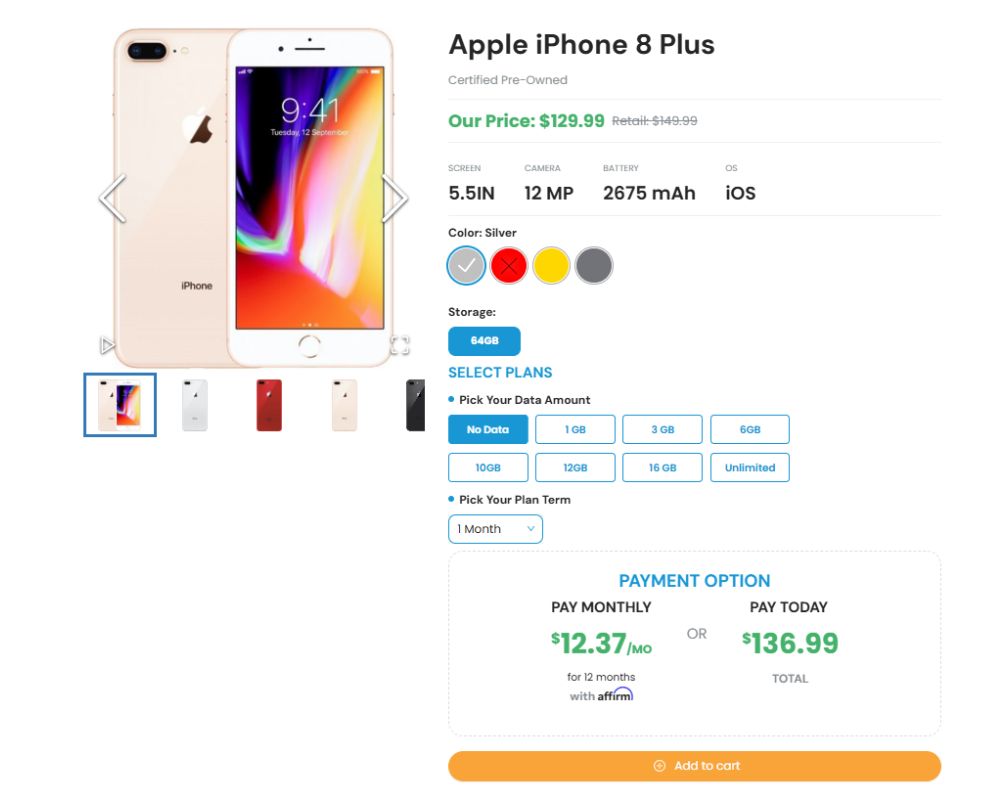Going Solo: How to Remove My Phone from a Family Plan?

![]() Introduction to Family Plans and Exit Strategies
Introduction to Family Plans and Exit Strategies
Understanding the Necessity of Family Plans
Family plans have become a staple in the world of mobile connectivity, offering an economical and convenient solution for households to manage multiple lines under one account. They can reduce the overall cost and simplify billing by bundling services – think of them as the shared streaming service account of the telecom world. With features like shared data pools and unlimited calling among members, family plans are a testament to the adage “the more, the merrier.” Additionally, family plans often come with perks like discounted rates on additional lines or special promotions, further enhancing their value. Moreover, they promote connectivity and communication within the family unit, enabling easy sharing of data and facilitating coordination between members. Overall, mobile family plans streamline communication expenses while fostering familial connectivity.

Why You Might Need an Exit Strategy?
Even the most beneficial arrangements come with red flags that might nudge you towards wanting an exit strategy from your family phone plan. There are several reasons why leaving a family plan might be necessary or beneficial for an individual.
- Changed Circumstances: When individuals move to a new location, they may find that their current family plan provider doesn’t offer adequate coverage or service in that area. Alternatively, their usage habits might shift over time, requiring more or less data, minutes, or texts than what the family plan currently offers. In such cases, leaving the family plan allows for the flexibility to choose a provider or plan that better suits the individual’s needs.
- Autonomy and Privacy: While family plans offer convenience and cost savings, some individuals may prefer to have more control over their own billing and usage. Leaving the family plan grants them autonomy to manage their account independently, without needing to coordinate with other family members or share personal details like usage history or billing information.
- Better Deals: Switching from a family plan to an individual plan can sometimes lead to cost savings or access to better promotions and deals offered by other providers. This could include discounted rates, waived activation fees, or special perks for new customers. By exploring options outside of the family plan, individuals can potentially find a plan that offers better value for their specific needs.
- Familial Dynamics: In certain situations, family matters may have disagreements or conflicts, making it necessary for an individual to separate from the family plan. This could be due to financial disagreements, differences in communication preferences, or simply a desire to establish independence. Leaving the family plan allows individuals to manage their own accounts and finances without being tied to familial obligations or dynamics.
Preparing to Leave a Family Plan
Assessing Your Mobile Needs Independently
Embarking on the journey to assess your mobile needs is a critical first step when considering leaving a family plan. You should start by evaluating your data consumption, call and text habits, and any additional features that are important to you, like international roaming or hotspot capabilities. Consider also your budget for monthly expenses as individual plans can vary greatly in price. Reviewing your past usage can be incredibly insightful to understand what level of service you require and to avoid paying for unnecessary extras. To help you understand your data usage needs, you have to figure out who is eating up all your data. Several activities can rapidly deplete your data, with some consuming more data than others. Browsing habits and content quality settings also plays a crucial role in how much data is used. In essence, your usage is contingent on the type of online activities conducted by the devices connected to your mobile hotspot. Keeping these in check is key to managing your overall data consumption effectively. Here’s a look at the most common culprits:

Check the Implications of Leaving Your Family Plan
Before you take the leap, it’s pivotal to understand the full landscape of consequences that come with detaching from your family plan. Review the contract terms; there could be penalties or specific conditions around leaving that you need to navigate. While a multi-line plan may offer benefits such as increased autonomy or flexibility, individuals should weigh the potential drawbacks before making the switch. Here’s a closer look at the implications of leaving your family plan:
- Financial Changes: Leaving a family plan typically means transitioning to an individual plan, which may result in higher monthly costs. While family plans benefit from shared expenses, such as data and minutes, moving to an individual plan means shouldering these costs alone. Individuals should carefully assess their budget and compare pricing options before making the switch.
- Early Termination Fees: Many family plans come with contracts or agreements that require members to stay for a specified period. Exiting the plan before this contract ends may incur early termination fees, which can be significant. It’s essential to review the terms of the contract and calculate any potential fees before deciding to leave the plan.
- Loss of Benefits: Family plans often come with perks such as discounted rates, shared data pools, or special promotions that may not be available on individual plans. Leaving the family plan could mean losing access to these benefits, resulting in higher costs or reduced features. Individuals should consider whether the benefits outweigh the drawbacks of leaving the family plan.
- Communication Impact: Leaving a family plan may require communication and coordination with other family members, especially if the departure impacts billing arrangements or shared expenses. Individuals should discuss the decision with other plan members and make necessary arrangements to ensure a smooth transition.
- Credit Considerations: Switching providers or plans may involve a credit check, which could impact credit scores. Additionally, early termination fees or outstanding balances on the current plan could affect credit standing if left unpaid. Individuals should be aware of any potential credit implications and plan accordingly before leaving the family plan.
Step-by-Step Guide to Get Off a Family Phone Plan
Initiating the Removal Process
When you’re ready to transition off the family plan, the first action is to communicate with the family plan owner. They may need to authorize your departure, which can usually be done either online or over the phone with the service provider. Next, contact your carrier’s customer service to understand the procedure—this might involve an Assumption of Liability (AOL) if you’re taking your number with you—or seek guidance on the best approach. Be prepared with your account details and verification information, as carriers will require these to process your request. Remember that if you encounter any difficulties during this process, don’t hesitate to contact your carrier’s customer service for assistance. This step-by-step guide will walk you through the process of leaving a family plan and setting up your own individual phone plan.
- Assess Your Needs: It is best if you have an overview of your mobile usage habits and determine the features you require in an individual plan, such as data, minutes, and texting limits. This will help you understand the best plan for your needs. If you frequently use as streaming services like YouTube, Netflix, or Spotify, you should consider a plan with a heavier data allotment.
- Research Individual Plans: Explore different mobile carriers and their individual plan options. Compare prices, features, coverage, and additional perks offered by each provider. Consider checking out carriers like AirVoice Wireless, which offers affordable individual plans that might be worth exploring. Ensure that the plan you choose aligns with your specific needs and budget constraints.
- Check Contract Terms: If your family plan is under contract, review the terms and conditions regarding early termination fees (ETFs) or any obligations you need to fulfill before leaving, the terms and conditions are usually on their website. If your provider is an MVNO (Mobile Virtual Network Operator), typically there is no contract involved, and thus, termination fees are not applicable. However, it’s essential to check with your specific provider to confirm this. Always review the terms carefully to ensure a smooth transition.
- Notify Other Plan Members: Inform other family members on the plan about your decision to leave. If you are not the account holder, you need to contact whoever has line ownership as you need authorization to leave the plan. Discuss any outstanding financial obligations or responsibilities related to the plan, such as paying your portion of the bill or settling any ETFs.
- Contact Your Current Provider: Reach out to your current mobile carrier to inquire about the process for removing your line from the family plan. Ask about any fees or penalties associated with leaving and confirm the date your line will be disconnected from the plan. If you encounter any difficulties during this process, don’t hesitate to contact your carrier’s customer service for assistance.
- Select and Activate Individual Plan: Once you’ve chosen a new individual plan and provider, contact the chosen carrier to sign up for the plan. Provide any necessary information for activation, such as personal details, billing information, and device compatibility.
- Transfer Your Number (Optional): If you wish to keep your current phone number, inform your new provider during the activation process. They will guide you through the steps to transfer your number from your previous carrier. Additionally, before switching carriers, ensure that your phone is unlocked and compatible with the new provider’s network. You may need to contact your current carrier to unlock your phone, if necessary, as some carriers lock devices to their network to prevent them from being used with other carriers. Checking the compatibility and unlocking status of your phone beforehand can help avoid any issues during the transition process.
- Set Up Payment Method: Set up your preferred payment method for the new individual plan, whether it’s through autopay, online billing, or another option offered by your new provider.
- Update Account Information: Log-in to your new account and input your password. Update your account information with your new provider, such as your billing address, contact details, and preferred communication preferences.
- Confirm Disconnection: After activating your new individual plan, confirm with your previous provider that your line has been successfully disconnected from the family plan. Verify that there are no remaining charges or obligations associated with your old account.

Following Up Post-Removal
After you’ve initiated the removal, stay on top of the process by following up. Ensure your line is indeed separated from the family plan by checking your account status online or receiving a confirmation from the carrier. Also, confirm your new plan details and check that all services are functioning correctly. If there are any discrepancies or unexpected charges, contact customer service immediately. Here’s a checklist of what to do after removing yourself from a mobile family plan:
- Confirm Removal: Ensure that you have been successfully removed from the family plan. Check with the account holder or the mobile service provider to confirm your removal.
- Back Up Data: If you were using a device provided by the family plan, back up any important data such as contacts, photos, and documents before transferring to a new plan or device.
- Activate New Plan: Once you’ve chosen a new plan and provider, sign up for the service and activate your new SIM card. Follow the instructions provided by your new provider to set up your account and configure your device.
- Update Contacts: Notify your contacts of your new phone number if it has changed. Update your contact information on important accounts and services, such as banks, social media, and online shopping platforms.
- Cancel Additional Services: If you were using any additional services or features provided by the family plan, such as insurance or streaming subscriptions, cancel them to avoid unnecessary charges.
- Return Shared Devices: If you were using a device provided by the family plan, return it to the account holder or the mobile service provider if required. Ensure that all personal data is erased from the device before returning it.
- Monitor Usage and Bills: Keep track of your usage and monthly bills with your new plan. Ensure that there are no unexpected charges and contact your provider if you have any questions or concerns.
Managing Data and Device After Exiting
Adjusting to New Data Limits
Adapting to your new phone data limits might require a change in your online habits if you previously enjoyed a large shared data pool. Consider monitoring your data usage more closely, especially in the first few months, to avoid overages. Many carriers offer tools or apps that track your usage in real time, you can also activate low data mode on your device to keep your data quota to a minimum. If you’re consistently staying well below your data limit, you might consider a less expensive plan that better aligns with your actual needs. Conversely, consistently exceeding your new limit signals that a different plan may serve you better.
Handling Device Payment and Ownership
As you make your exit, dealing with your device payment and ownership is crucial. If your phone was obtained through the family plan with an equipment installment plan or lease, you’ll need to confirm whether you’re obligated to pay it off immediately upon leaving. Some carriers may allow you to transfer the installment plan to your new account, maintaining your current payment schedule. Make sure you have a clear understanding of your carrier’s policies and get all agreements in writing to avoid any misunderstandings regarding your device’s financial obligations.

Advanced Tips for a Smooth Transition
Transitioning from a family mobile plan to an individual one marks a significant shift in your telecommunications setup. To ensure a seamless transition and maximize benefits, consider these advanced tips
- Plan Ahead for Timing: Coordinate the transition timing carefully to align with the end of the billing cycle, minimizing prorated charges or overlapping bills. If you’re relying on a number transfer, ensure there will be no service interruptions by timing the switch close to your current cycle’s end for a seamless transition.
- Review Contract Terms: Understand any contractual obligations or penalties associated with leaving the family plan early to avoid unexpected cancellation fees.
- Optimize Device Usage: Assess the condition and performance of your current device to determine if it’s more cost-effective to continue using it or upgrade to a newer one.
- Explore Discounts or Promotions: Research special offers, discounts, or promotions available when signing up for a new individual plan to maximize savings.
- Consider Device Financing Options: If you need to upgrade your iPhone or Android device, explore financing options offered by mobile providers. Some plans allow you to pay for a new device in installments, which can help manage upfront costs. For example, AirVoice Wireless offers affordable devices with payment in installments through Affirm.
- Evaluate Data Usage Patterns: Analyze your data usage habits to choose an appropriate data plan that meets your needs without overspending.
- Review International Roaming Options: If you travel internationally, research affordable roaming options or consider purchasing local SIM cards for travel to save on roaming fees.
- Customize Plan Features: Take advantage of customizable plan features such as hotspot tethering, international calling, or premium content subscriptions to tailor your plan to your specific requirements.
- Research Feedback: Before switching plans, check customer reviews online. Insights from others can help you choose a provider that matches your needs.
FAQ: Navigating the Complexities of Plan Changes
How do I remove my phone from my family plan if I am not the account holder?
If you’re not the account holder but wish to cancel your line in a family plan, you typically have a few options. However, regardless of the method you choose, be prepared to provide any necessary account information and verify your identity to complete the cancellation process. Additionally, make sure to settle any outstanding balances or fees associated with your line before cancellation to avoid any potential issues.
- Contact the Account Holder: Reach out to the person who owns the account and explain your desire to cancel your line. They will likely need to initiate the cancellation process on your behalf.
- Visit the Provider’s Store: Some mobile service providers allow non-account holders to cancel individual lines in-store. Bring identification and any necessary account information, and speak with a representative to request cancellation.
- Call Customer Service: Contact the mobile provider’s customer service line and explain that you want to cancel your line in a family plan. They may require verification from the account holder before processing the cancellation.
- Online Account Management: If the account holder has granted you access to manage your line online, you may be able to log in to the provider’s website or mobile app to initiate the cancellation yourself.
What happens to my device payment if I leave the plan?
If you leave a family plan, the remaining device payment responsibility is typically transferred with you to your new individual plan. You will continue making the payments until the device is paid off. However, this may vary by carrier, so it’s essential to confirm the terms with your service provider. Be sure to clarify this point to avoid any unexpected charges.
Are there any fees or penalties for leaving a family plan?
Leaving a family plan may incur fees or penalties, mainly if you’re under contract or you have an outstanding balance on a device payment plan. Early termination fees could apply if you’re still within a contract period. Some carriers might waive such fees if certain conditions are met. It’s crucial to review your contract or talk with your service provider about potential costs before making the move.






